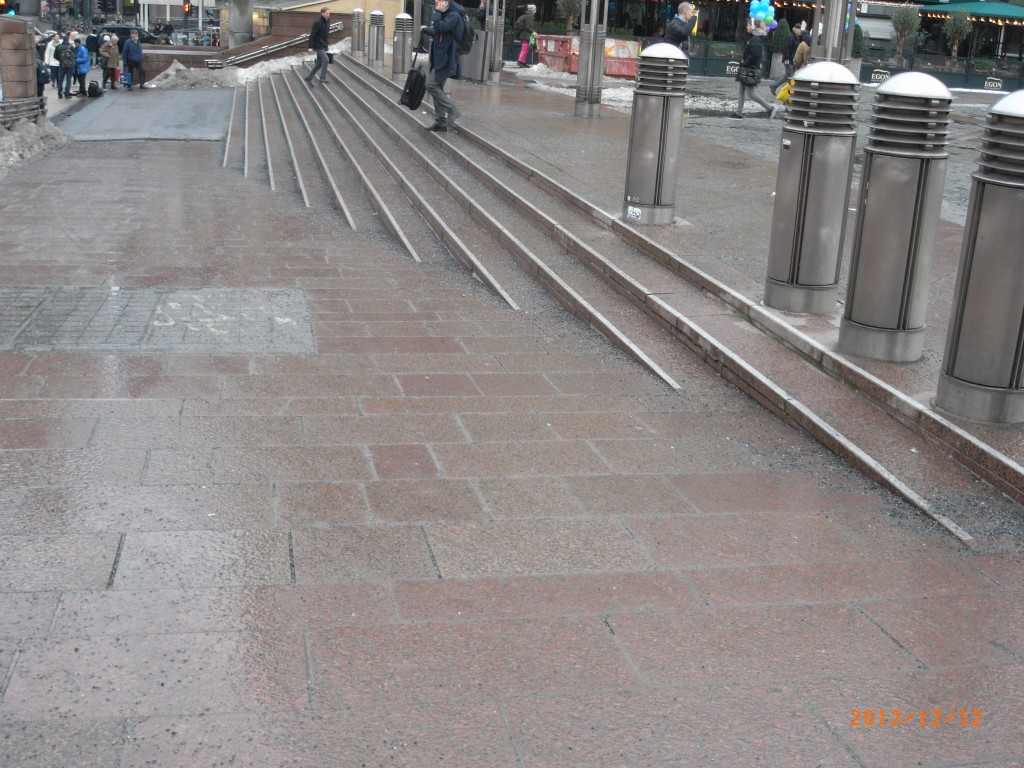I designed this workshop for the CUNY Graduate Center’s English program orientation for new teachers, held on August 25th, 2015. It was designed to give a 50-minute introduction to the principles of Universal Design for Learning and to help first-time teachers think about how they apply to their writing-intensive humanities courses. Please feel free to use it and adapt it as you see fit. And, of course, comments are welcome either in the box below or by email.
Part 1: Confronting our beliefs about ability, inclusion, and access
I want to start our conversation today with some guiding questions.
- What do we expect our students to know when they arrive in our classrooms?
- What do we expect them to be able to do? Do we imagine “baseline abilities”?
- What aspects of our courses do we expect them to find challenging?
- What aspects of our courses do we expect them to find impossible?
Prompt: Freewrite for five minutes in response to the following question. Andrew will keep track of time, just follow the ideas wherever they take you, even if it takes you off topic:
What do you believe about these things that students find challenging or impossible? When do we recognize a shift between challenging students and shutting them out?
Part 2: Universal Design for Learning
Universal Design (UD) describes an inclusive design movement originated in fields of architecture and consumer product design. The idea is that when most people sit down to design a building or an object, they start by imagining a typical user, often a user very similar to the person doing the designing.
Think about airplane seats. The designers of most airplane seats, throughout the history of that technology, have put strict constraints on the shape and size of their designs. We can look at the seat and imagine, with some surety, who the designers envisioned as their end user–what abilities and personal needs they would be expected to have.
The UD movement approaches design anticipating, at the onset, the widest possible range of users. This requires designers to anticipate what aspects of their design might impose barriers for full participation.

Notice the design elements included in this Oslo train station. What choices were made to invite a wide range of users? (Taken from the website for Zero Project, a UD initiative in Norway)
While so far I’ve been talking about UD as an architecture and design movement, UD has become a motivating imperative in the areas of web design, information design, and, of course, classroom design. Universal Design for Learning (UDL) describes an approach to classroom and pedagogical design that attempts to anticipate and invite the widest possible range of students into full and equal participation.
The UDL approach boils down to three main principles (all of which are covered in great detail, and for a range of educational settings, by the National Center for UDL):
- Multiple means of representation, to give learners various ways of acquiring information and knowledge,
- Multiple means of expression, to provide learners alternatives for demonstrating what they know,
- Multiple means of engagement, to tap into learners’ interests, offer appropriate challenges, and increase motivation. (Dolmage 2015)
The goals of these three principles are to create classrooms and pedagogies that work equitably for all students. In a moment, we’ll think more closely about how these principles apply to our work as writing or humanities teachers.
Part 3: UDL in the Writing and Humanities Classroom
Think about these components of your class:
1. How do you communicate with your students?
- What kinds of texts are they required to read?
- What kind of multi-media texts are they required to read?
- How, other than “reading,” can students learn important ideas from the class?
2. How do you expect students to demonstrate what they know?
- What kinds of assignments are students doing for a grade?
- How are you evaluating their success on these assignments?
- What alternatives are you offering in terms of using other media or literacies?
- How are students expected to understand the criteria for evaluating the success of their products?
3. How do you allow for multiple kinds of engagement?
- What avenues of “participation” are open to students who are shy, asocial, or uncomfortable in class?
- What options do you give students to choose their work based on their interest and abilities?
- What opportunities do you give students to tell you how they learn best?
In the time that remains, I want to get us brainstorming and problem solving together. Take the notecard I provided and write on it a question that you want answered about UDL and how it might apply to your work in the classroom this semester. Once you have written your question, you will work in small groups to crowdsource answers and compare your concerns with others. The most pressing questions will come back to the full group for a final wrap-up Q&A
Prompt: What do you want to know more about from this discussion of UDL and teaching? Do you want concrete examples of one kind or another? Do you want to pose a scenario or problem for us to talk through? What do you need before you walk out the door today?
— Write your question on your note card
— On the other side of your card, write your name
— When you are done, raise your hand or catch Andrew’s eye so he knows
[Full notes from this workshop session are available on this google doc, or for download as a Microsoft Word document]
Part 4: Conclusion and Further Reading
Many disability studies scholars have pointed out that the phrase Universal Design sounds utopian. There is no way to truly anticipate all possible users and their unique abilities, vulnerabilities, and needs. Jay Dolmage has described UD as an approach, “[a] way to move” (2015). In that light, I encourage you to continue thinking about the ways your course design might invite the widest possible range of users. Try experiments in flexibility and multiplicity in your assignment design, course policies, and communication practices. Below are some useful resources to get you started.
Jay Dolmage, “Universal Design: Places to Start,” Disability Studies Quarterly 35:2 (2015): http://dsq-sds.org/article/view/4632/3946
This short article defines UD approaches and imagines how they apply to our roles as college-level instructors. It also includes a 20+ page appendix of “places to start” for implementing universal design in a wide range of classes, including lecture, discussion, seminar, and lab-based classes.
Patricia Dunn, Talking, Stretching, Moving: Multiple Literacies in the Teaching of Writing, 2001
This book includes excellent assignment ideas for engaging students in diverse learning practices, including play-acting, analysis using picture drawing, hands-on rhetorical outlining, and other techniques that help students with a wide range of cognitive skills succeed at writing. Good to get from ILL, copy out a chapter or two, and try out experiments during the term.
Disability Rhetoric, www.disabilityrhetoric.com
This website serves as a network for composition/rhetoric scholars who work in disability studies. It contains bibliographies, sample syllabi, and a wealth of other resources.


